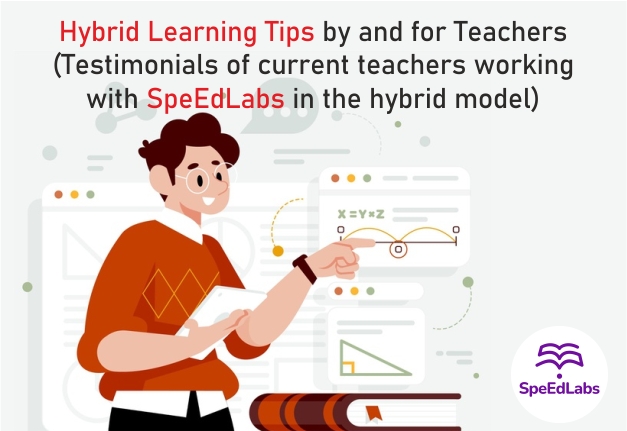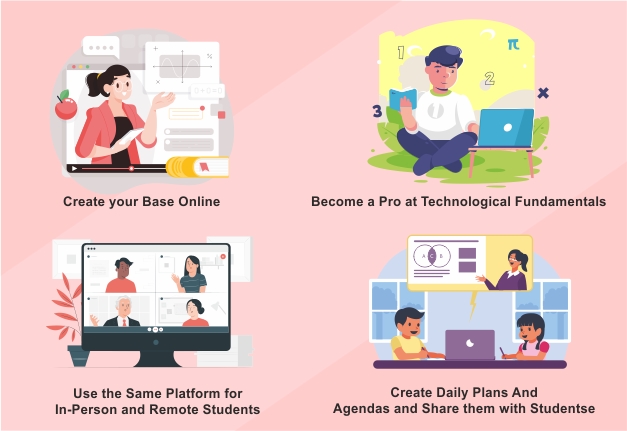Many teachers reliably report that active students during distant and hybrid learning are a challenge to them. Students may battle to be genuinely and intellectually present for a huge number of reasons, including overseeing interruptions at home, confronting issues of injury, managing innovation challenges, lacking lucidity of assumptions, and the sky’s the limit from there. The questions are how you can make your students engage more in the class and more likely connect that assures to fulfill their personal as well learning needs.
At an exceptional second in schooling, teachers are on the cutting edges, adjusting their work on the web and mixture designs without the advantage of time and assets to get ready. This is especially difficult when students can join a live class either face to face or distantly, a typical type of mixture picking up during the COVID-19 pandemic. How would you as a teacher plan an extraordinary class when students don’t belong to the same locations as yours?
Here are the top 4 tips by and for teachers working with Hybrid Learning:
1. Create your Base Online
Earlier, students consider the physical class as the main base of their learning where they can explore every topic, clear any doubt irrespective of any barrier. Teachers think of a class as the most suitable place for content delivery and assessment. This was meant to be the place where communities are built. But today, you lack the physical space in hybrid learning. Thus, it’s advisable to reach out to your students online. It is considered the best way for remote students.
The best way to get your headquarters online is by combining asynchronous and synchronous learning.
You can ensure to have a backup plan, by providing the content online like notes, instructions, and more so that students can consider learning if they fail to join the class. This backup removes a ton of barriers in hybrid learning.
Now most of us love to engage in synchronous learning, like debates, presentations and more. Thus, if you provide them with the details and tasks beforehand online, you can remove a ton of extra effort. To make your asynchronous learning better, ensure you have provided detailed guidance.
2. Become a Pro at Technological Fundamentals
When you begin with taking things online, you should be first well versed with today’s technology. Not everything can be learned in a single day, but we can surely focus on the basics to improve the learning experience of students. Some of them are listed below;
i. Ensure students can Hear and Listen to you
Many teachers complain about the technical problems they face between the classes, thus it’s better if you learn about your devices beforehand. Try to use simple devices and position them perfectly. You should make an effort to ask students how technology is serving them. Make sure you are in-person students and remote students both are enjoying the hybrid learning sessions.
ii. Know-how sharing screen and Project Works
This means you have to figure out how to project remote students on a screen in the study hall and figure out how to share your screen with both far-off and in-person students. If you are adequately lucky to have numerous gadgets in your study hall, devote one to “broadcast” the class and the other for your instructing purposes.
3. Use the Same Platform for In-Person and Remote Students
To connect with your students at a personal level, you should bring them together at a video call. Using video call tools like Zoom can help you to bring a larger audience to the same place where they can connect and enjoy learning.
If the video calling isn’t working for you or doesn’t seem practical at the moment, you can also try real-time conversation tools to chat. There are several tools you can choose from such as Slack, Google Chat, Microsoft Teams which allow collaboration without requiring a video/audio set up.
Also, try making the conversations engaging by allowing your to run personal students visible to the remote students. Allow them to share their thoughts and make instructions more structured for both. Small groups can be formed that can share their work, making their intuition apparent to all students using technology.
4. Create Daily Plans And Agendas and Share them with Students
When you share lesson plans in advance, they are well prepared and can be easily adapted to hybrid learning. As much as this is new for you, it is for the students too. Sharing your daily plans before the class will give them a clear understanding of what is going to come next. You can use a tool or share screen to provide an explicit overview of today’s plan.
If you are on the creative side, try using links to make the class more interactive. Most teachers recommend this to connect students with the resources and tools that they need for the class.
At last, hybrid learning is new to most instructors and students, and educators should allow themselves to take some time, recognize and accept difficulties and botches, and focus on the wellbeing and commitment of students.
Advise yourself that learning is the objective and this will appear to be unique from years past. It’s acceptable to move at your pace.
Also published on Medium.

